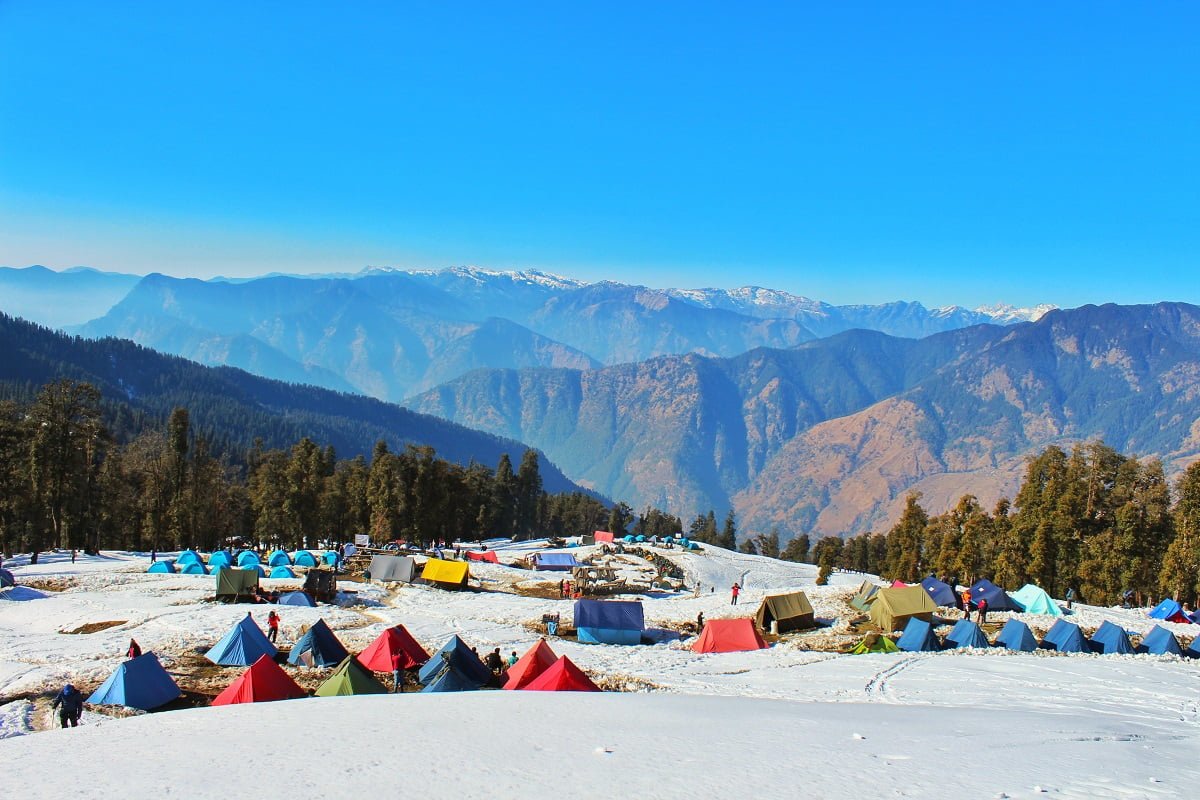Kedarkantha Trek Itinerary: 2025
The Kedarkantha Trek itinerary is more than just a route—it’s an experience that takes you deep into the snow-filled beauty of the Himalayas. With every step, you pass through pine forests, charming villages, frozen lakes, and wide-open views of snow peaks. For many trekkers, it’s the perfect balance of adventure and comfort, making it one of the best treks in Uttarakhand.
This journey is designed to be beginner-friendly while still giving you a taste of true Himalayan adventure. In this guide, we’ll walk through the Kedarkantha Trek itinerary in detail—day-by-day routes, weather across seasons, and everything you’ll need to prepare. Whether you start from Sankri or the quieter Kotgaon, this trek is unforgettable in every season.
Introduction to the Kedarkantha Trek
The Kedarkantha Trek itinerary usually stretches across 5 days and 4 nights. The adventure begins from either Sankri (the main base village) or Kotgaon (a peaceful alternative just 5 km away). Both starting points give you access to dense pine forests, charming wooden houses, and incredible views.
What makes Kedarkantha special is that it doesn’t demand years of trekking experience. You don’t have to be a hardcore mountaineer to fall in love with this trail. From kids to seasoned trekkers, everyone finds something here—snow trails, breathtaking campsites, and a summit view that feels straight out of a postcard. No wonder it’s often listed among the best trekking places in India.

Weather in Kedarkantha (November to December)
As November rolls in, the trail begins to change its face. A thin carpet of snow starts forming, dusting the trees and meadows in white. The days are still pleasant (8–12°C), but nights dip to -2°C to -5°C.
During this time, the Kedarkantha Trek itinerary offers the best of both worlds: snowy landscapes without the extreme cold of peak winter. Forests look magical, and campsites like Juda Ka Talab are surrounded by soft layers of snow, making the evenings by the campfire even cosier.
Weather in Kedarkantha (December to January)
By mid-December, the trek transforms into a true winter wonderland. Heavy snow begins to cover the trail, with daytime temperatures of just 2–5°C and night temperatures dropping close to -10°C.
The Kedarkantha Trek itinerary in this season feels like stepping into a snow globe. Juda Ka Talab freezes over, Kedarkantha Base Camp turns into a snowy meadow, and every morning opens with golden light reflecting off white peaks. It’s a bit tougher, but for snow lovers, it’s the perfect time.
Weather in Kedarkantha (January to February)
January is when winter is at its fiercest. Snow blankets the entire trail, and nights can hit -12°C or even lower. The trek becomes more demanding, but the rewards are unmatched.
If you’re following the Kedarkantha Trek itinerary this month, you’ll witness untouched trails, frozen streams, and silence that only the Himalayas can offer. The summit view is spectacular—snow-covered peaks stretching endlessly in every direction. This is the season for those who love raw adventure.
Weather in Kedarkantha (February to March)
From February, the snow starts melting slowly, making the trek slightly easier. Days turn warmer (5–8°C), while nights still hover around -6°C.
This is a sweet spot in the Kedarkantha Trek itinerary—you still get snowy trails but with fewer trekkers and more peaceful campsites. Forests slowly reveal their greenery again, and by March, the mix of snow and spring makes it a unique experience.
Day-Wise Kedarkantha Trek Itinerary
Here’s a simple breakdown of the trek:
- Day 1: Drive from Dehradun to Sankri or Kotgaon (6,400 ft). The 200 km journey is a treat in itself, passing Mussoorie, pine forests, and the Tons River Valley.
- Day 2: Trek from Sankri/Kotgaon to Juda Ka Talab (9,100 ft). A moderate walk through forests leads to a beautiful lakeside campsite.
- Day 3: Trek to Kedarkantha Base Camp (11,250 ft). This is where the snow feels endless, and the views of Swargarohini and Bandarpoonch get better.
- Day 4: Summit Day! Climb to Kedarkantha Peak (12,500 ft) and descend to Hargaon (8,900 ft). This is the highlight of the Kedarkantha Trek itinerary, offering 360° views.
- Day 5: Hargaon to Sankri/Kotgaon and drive back to Dehradun.
Every day on this trek is balanced—enough time to trek, rest, and soak in the views.
Why Kedarkantha is Among the Best Treks in Uttarakhand
What sets Kedarkantha apart from other Himalayan treks? It’s simple: accessibility, beauty, and adventure packed together.
The Kedarkantha Trek itinerary allows you to experience snow and Himalayan views without going too high or too remote. In just five days, you’ll trek through forests, meadows, and reach a summit that feels like the top of the world.
It’s no surprise that Kedarkantha ranks among the best treks in Uttarakhand and is often listed in guides to the best trekking places in India.
Preparation Tips for Kedarkantha Trek
If you want to enjoy the Kedarkantha Trek itinerary fully, preparation is key:
- Get your fitness up with jogging, cycling, or stair climbing.
- Carry proper winter gear—insulated jackets, thermals, snow boots, gloves, and trekking poles.
- Take it slow and steady on climbs; this isn’t a race.
- Drink plenty of water to keep your energy up.
Good preparation ensures you’ll remember the trek for its beauty, not its challenges.
Cultural and Scenic Highlights
The villages of Sankri and Kotgaon are experiences in themselves. Wooden houses, apple orchards, and warm Garhwali hospitality make you feel at home. On the trail, Juda Ka Talab adds a touch of legend with stories passed down through generations.
And the summit? That’s the memory you’ll carry forever. Standing there, surrounded by white peaks under a wide Himalayan sky, you understand why people call this one of the best treks in India.

Accommodation and Food During the Kedarkantha Trek
The Kedarkantha Trek itinerary includes campsites like Juda Ka Talab, Kedarkantha Base Camp, and Hargaon. Tents are basic but warm, and food is simple yet nourishing—dal, rice, roti, vegetables, and the occasional local dish.
Evenings by the fire, under a star-filled sky, are as much a part of the trek as the summit climb.
Safety and Precautions
Winter treks bring challenges, and Kedarkantha is no different. Always keep these in mind:
- Weather can change quickly—avoid trekking in heavy snowfall.
- Carry essential medicines and a first-aid kit.
- Trek with a group or guide for safety.
The Kedarkantha Trek itinerary is safe if you respect the mountains and take precautions.
Conclusion
The Kedarkantha Trek itinerary is a journey of snow, forests, starry nights, and warm village hospitality. Whether you begin at Sankri or Kotgaon, every step brings you closer to the heart of the Himalayas. It’s no wonder this trail remains one of the best treks in Uttarakhand. For those looking to make this adventure both safe and memorable, BlissCamp India stands as the Safest trekking organisation in dehradun, ensuring every trekker feels at home in the mountains.


